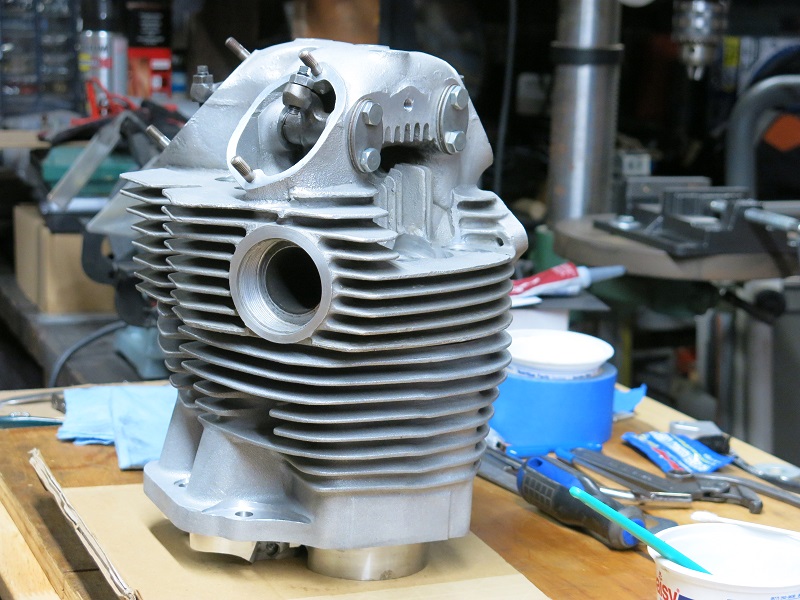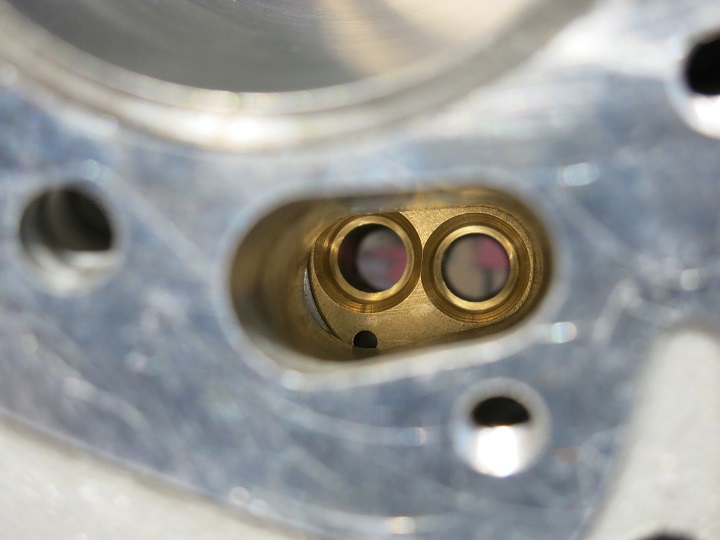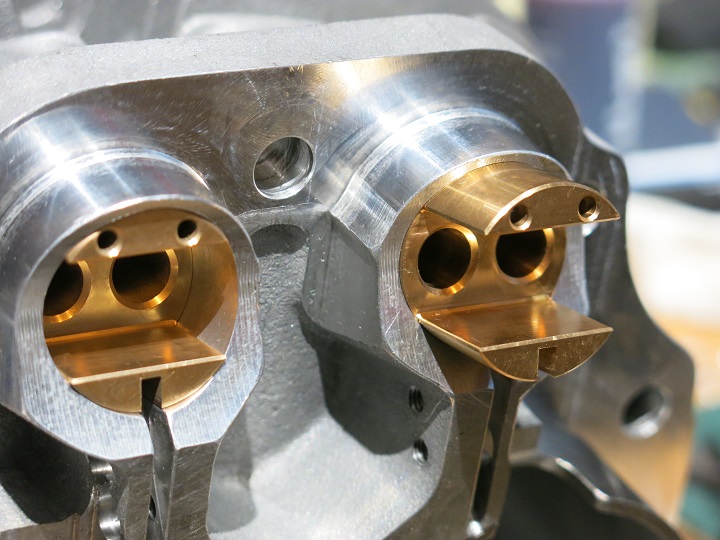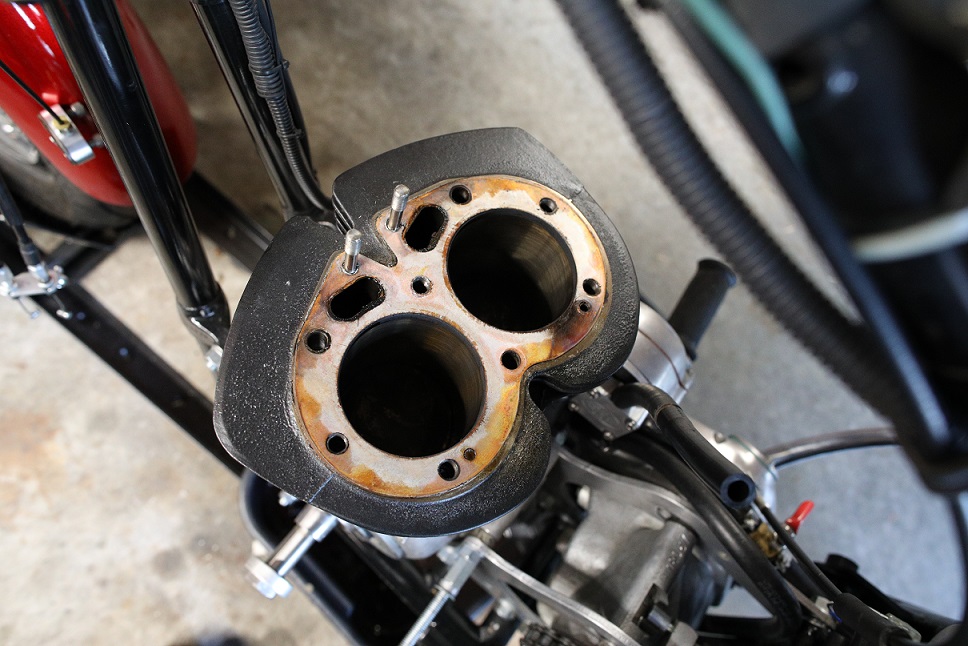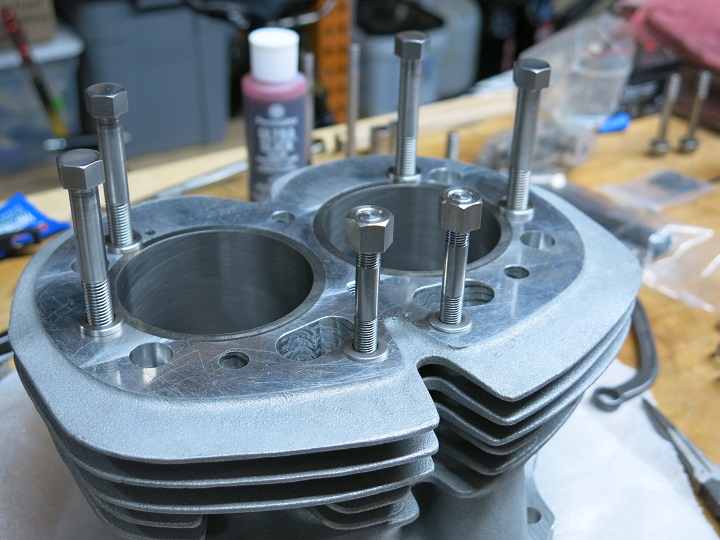3/8 x 20 tpi for the 4 head bolts and 7/8 x 26 tpi for the two front studs. If made right, those studs have a longer thread engagement than stock. Reducing stress in the threaded joints is particularly important for an alu barrel, and use of reduced shank bolts is suggested. Maybe JSM can be talked into making a bolt kit which suits the Molnar barrel?
As for the 4 long barrel to crankcase bolts, they are as per 1972/73 Commando 850 design, which means your crankcase will need to be tapped and Helicoils inserted for 3/8 UNC as per 1972 Norton spec. Alternatively you may consider having 4 Allen bolts made with 3/8 BSW (16 tpi) threaded sections, but I'd still use Helicoil inserts. Use of reduced shank bolts is worth considering due to the additional stretch caused by the alu barrel. Underside of Allen bolts should be trued in a lathe, and use of turned washers (064147) is suggested, ensuring complete and even contact.
- Knut

